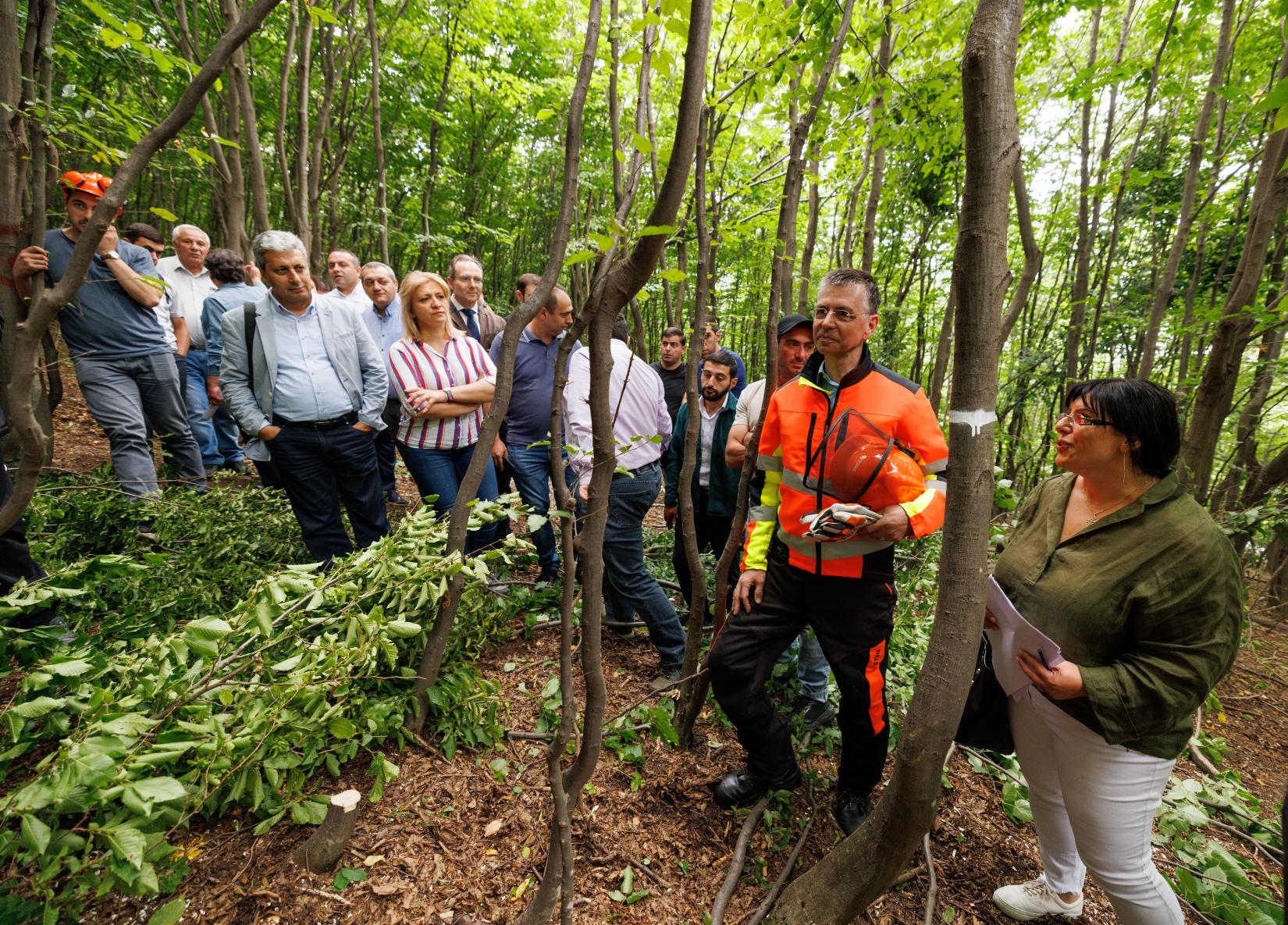New Growth: Armenia Leads in adopting Sustainable Restoration through upgrading of Coppice Forests
16 July 2024
Vanadzor, Armenia - July 16, 2024 – Armenia is one of the 35 global biodiversity hotspots, with forests and their management playing a crucial role in sustainable biodiversity conservation and climate change mitigation. Armenian forests are among the most threatened ecosystems in temperate biomes, with accelerating degradation, largely attributable to over-exploitation. Deforestation and forest degradation are the major environmental problems in the country. The economic costs of deforestation, including greenhouse gas emissions and loss of ecosystem services, are estimated at over $8 million per year (World Bank, 2023).

The urgency of addressing conservation and improved management of forests in Armenia cannot be overstated. Forests are not only vital for maintaining biodiversity but also serve as a critical buffer against climate change impacts. The degradation and loss of forest cover have far-reaching consequences, affecting local communities, wildlife habitats, and the overall ecological balance.
Taking action on this significant concern, the Food and Agriculture Organization of the United Nations (FAO) organized a practical demonstration on July 16, 2024, focusing on coppice forest restoration within the designated pilot area of the "Vanadzor Forestry" branch of Hayantar SNCO.
Coppice management, a traditional woodland practice involving periodic cutting of trees to ground level to encourage regrowth, typically results in uniform and evenly aged forests. In Armenia, coppice forests arose from clearings during the 1990s, driven by electricity crises. The project seeks to transform these coppice forests into diverse, high-quality woodlands through selective upgrading. This initiative aims to enhance species richness and overall forest structure, ensuring vitality and sustainability for the future.
The event was organized within the framework of the “Forest resilience of Armenia, enhancing adaptation and rural green growth via mitigation” project. This eight-year project is co-executed by the FAO and the Environmental Project Implementation Unit of the Ministry of Environment of the Republic of Armenia. The project is financed by the Green Climate Fund as well as by the Government of Armenia, the World Wildlife Fund, the Autonomous Province of Bolzano (Italy), the Austrian Development Agency and FAO.
Government officials, representatives from international and local organizations, and various stakeholders gathered to witness the practical implementation of “selective upgrading” as a crucial management strategy for degraded coppice forests. Selective upgrading involves carefully choosing and removing certain trees to promote the growth and health of remaining trees, thus improving the overall structure and resilience of the forest.
The demonstration showcased modern machinery and equipment procured within the framework of the project, highlighting their role in sustainable restoration operations and workplace safety. FAO’s Regional Forestry Officer, Norbert Winkler-Ráthonyi, and International Silviculture Specialist, Professor Eduard Hochbichler, led a comprehensive training session following the demonstration. Participants engaged in discussions on best practices, drawing from international experiences and addressing key issues related to workplace safety in forest restoration efforts.
This initiative represents a significant step forward in Armenia's commitment to sustainable forest management and biodiversity conservation. By selective upgrading of degraded coppice forests transforming them into forests of higher quality and vitality, Armenia can enhance its resilience to climate change, support biodiversity, and promote green growth in rural areas. The collaboration between international and local partners underscores the importance of cooperative efforts in tackling environmental challenges and achieving long-term sustainability goals.



